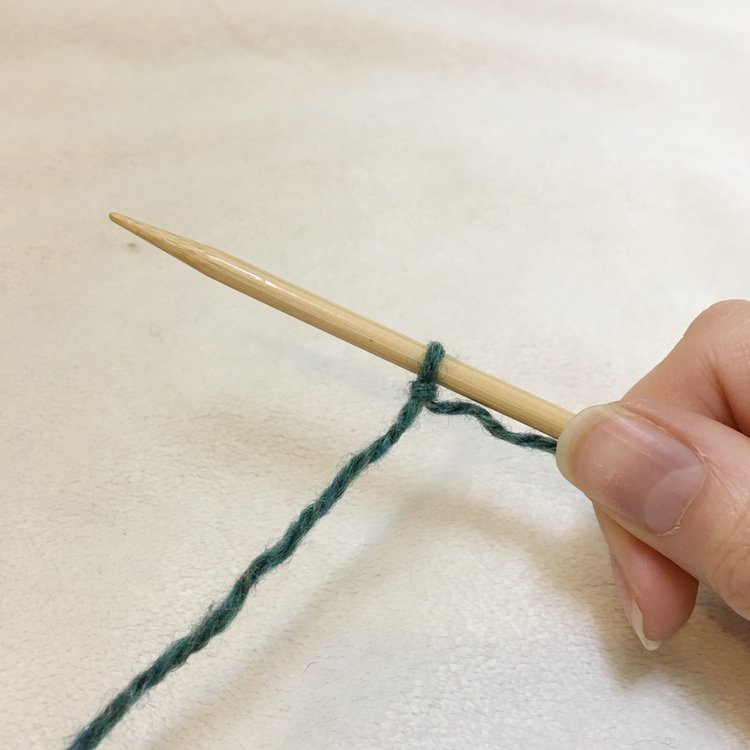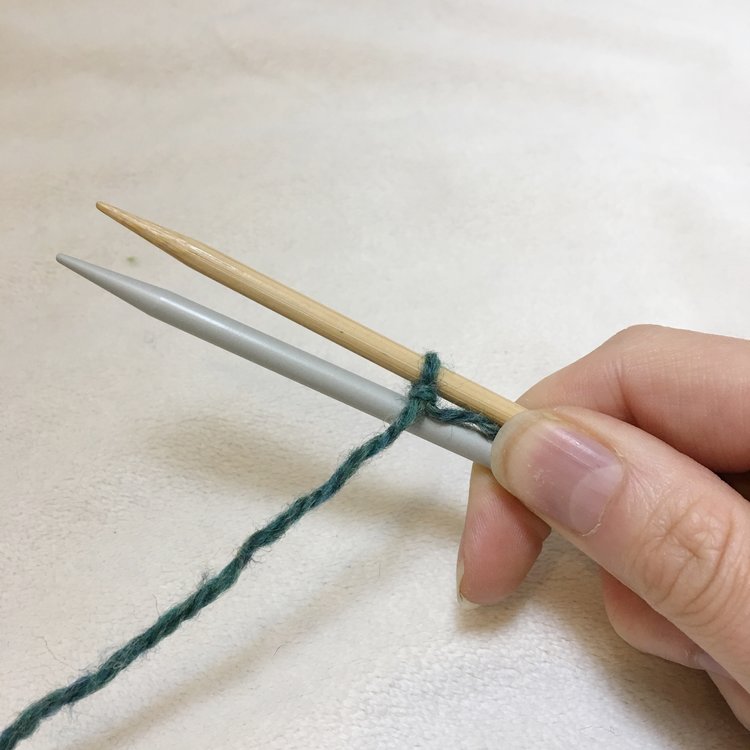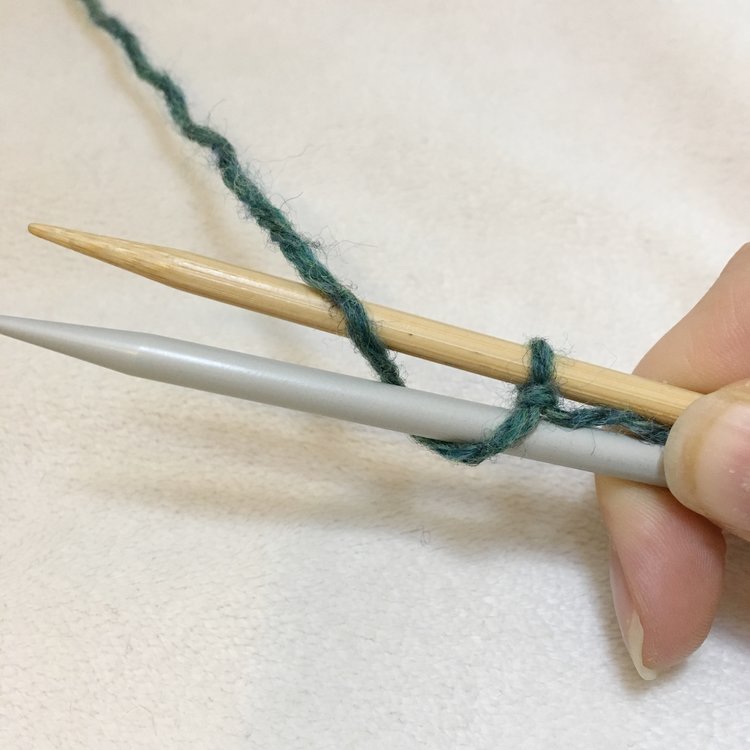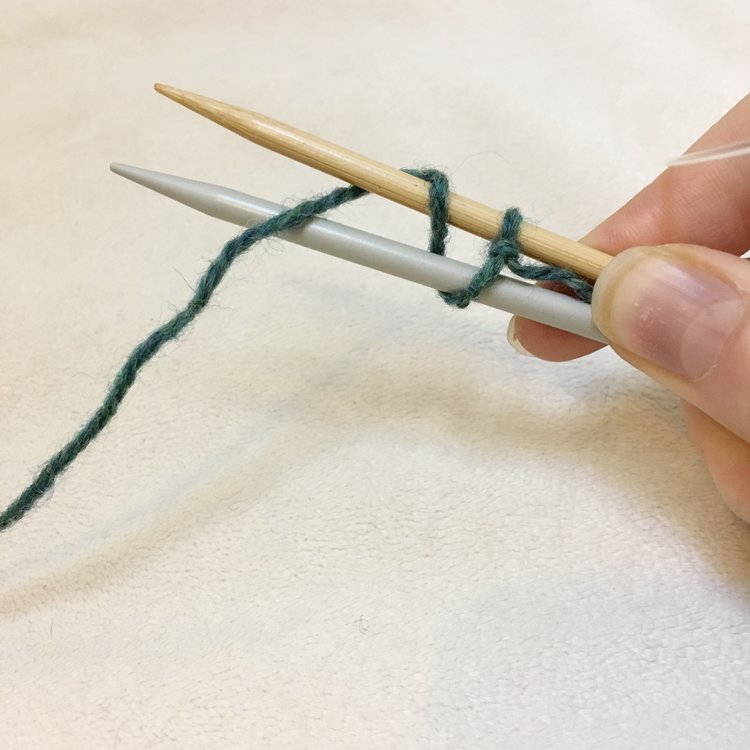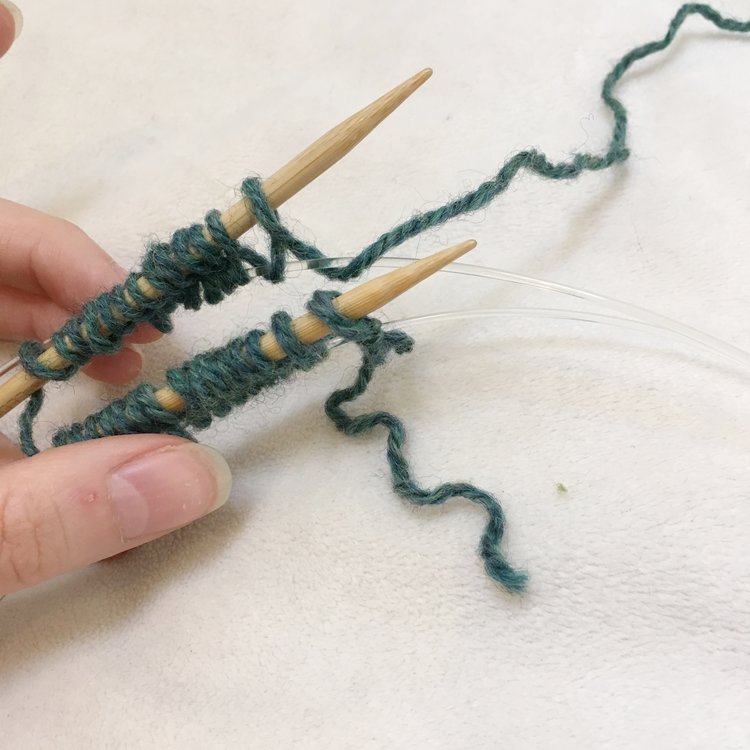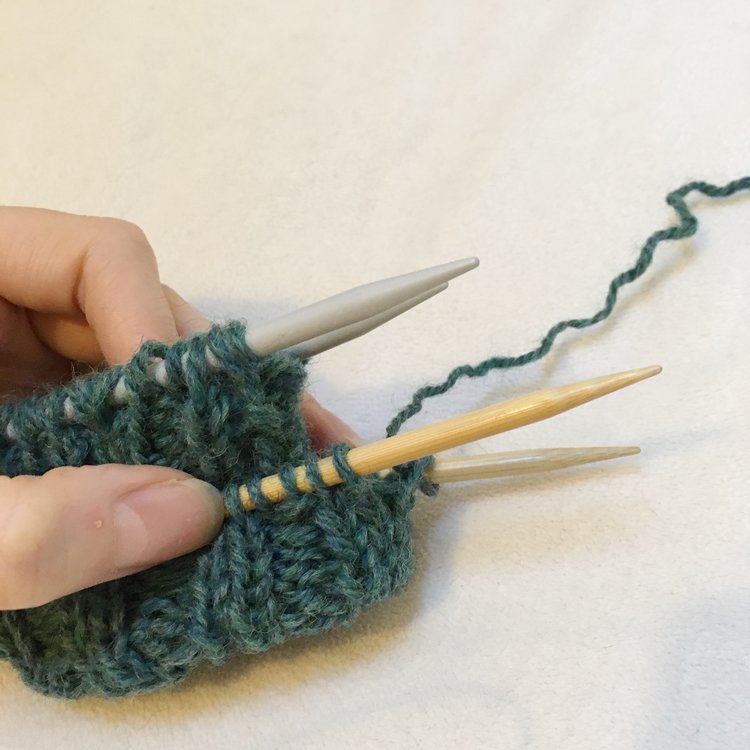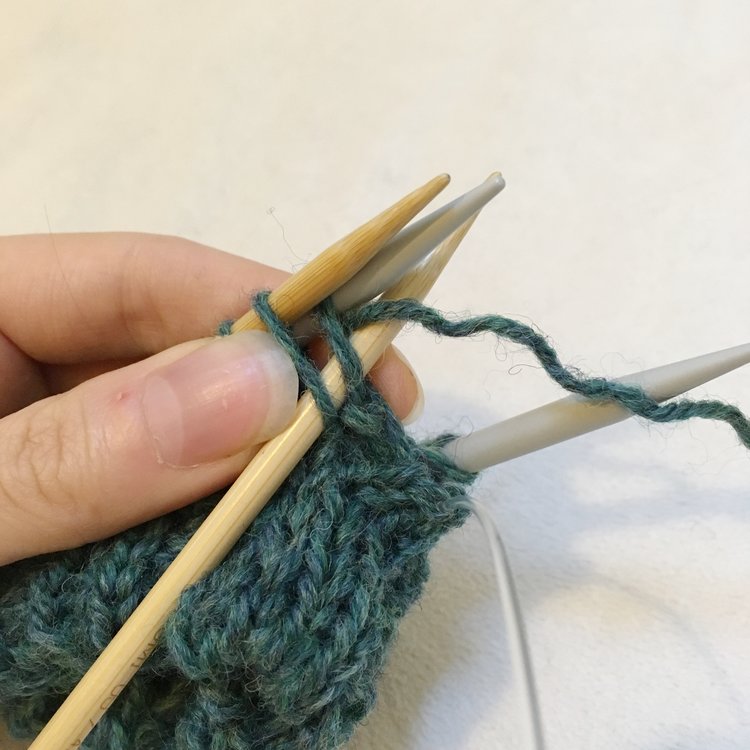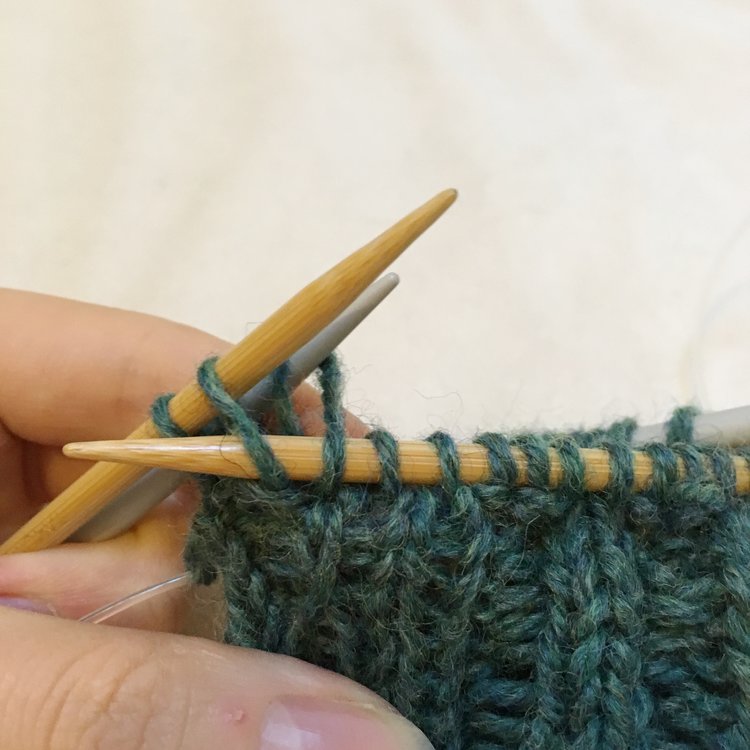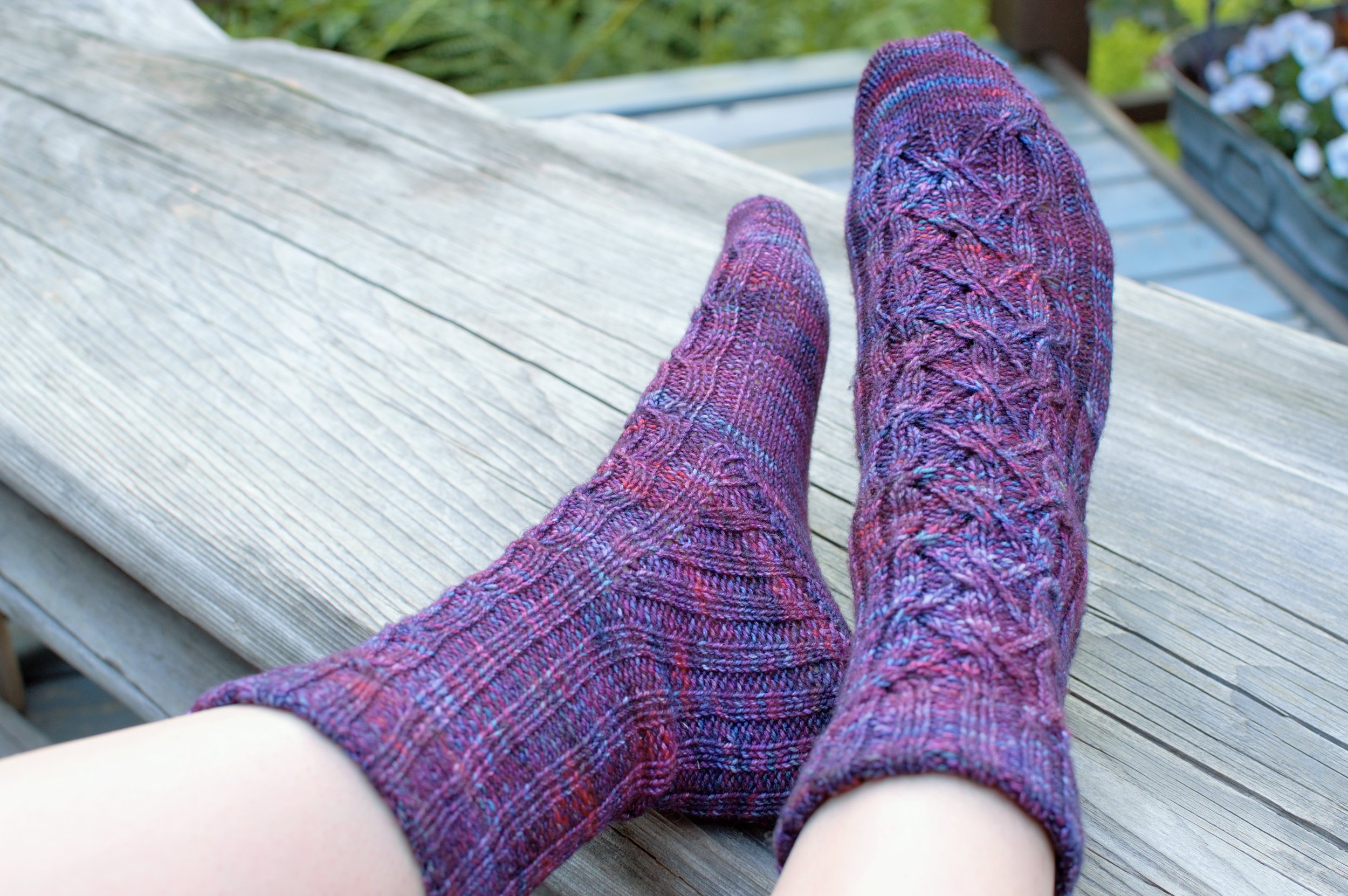
Have you ever bought yarn that was just dying to be something specific? This happens to me with sock yarn sometimes; I’ll pick up a particularly pretty skein in store without a project in mind and end up browsing Ravelry for ages looking for the perfect pattern to bring it to life, but none of them seem quite right. That’s exactly what happened with this Malabrigo Sock Yarn that I impulsively grabbed the last time I was at Argyle Yarns. The multifaceted colourway (Aniversario) was calling to me but I wasn’t quite sure which sock pattern off my current “to knit” list I was going to pair it with. Once I got it home and wound it into a cake it became clear that this yarn had a mind of its own and I was just along for the ride, so I cast on without a pattern and ended up putting together a pair of socks fit for a king!
I named the Kings County Socks partly for their regal colour and partly because they’re inspired by Brooklyn’s unique mix of exaggerated aesthetics and no-nonsense attitude. They start off with a big, squishy fold over cuff which, let’s be honest, is unnecessarily luxurious. Usually cuffs are purely functional, but why not treat yo’self every once in a while? After joining the provisional cast-on, the cuff transitions smoothly into a 2×2 rib down the leg of the sock because there’s nothing better than a sock that hugs your foot. At that point the yarn was like, “hey, this is a good thing we’ve got going here… let’s just roll with it” so the socks incorporate a Strong-style heel (modelled afterthe one that Gerdine Crawford Strong designed for the Fall 2003 issue of Knitter’s Magazine) in order to maintain the ribbing right down to the heel turn.
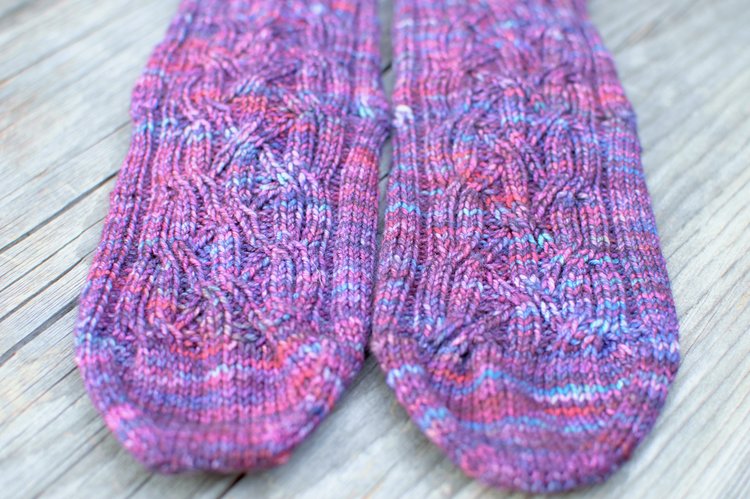
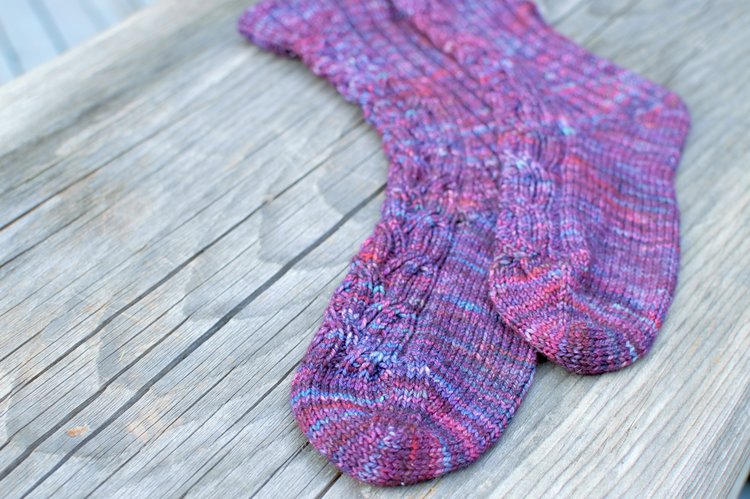
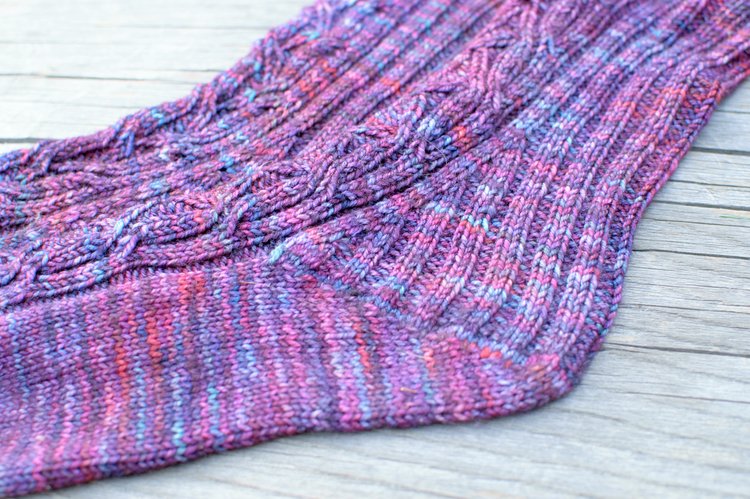
The beauty of this heel is that not only does it allow you to increase in pattern and thus gives you a heel that’s well fitted to the curves of your ankles, but it has no wrapping, no picking up stitches, and no measuring anything. All it is is a super simple mix of gusset increases followed by short row decreases. This utility is offset by the cable panel that runs down the front of the sock between the cuff and the toe, which is from Norah Gaughan’s lovely Knitted Cable Sourcebook. The book is an excellent resource for any knitter because not only does it contain examples of different stitch patterns but also goes into depth about the way Norah works with the different aspects of cables to develop unique textures and motifs. I love the way that these turned out and I’m ecstatic that I was able to put together a pair of socks deserving of this skein of yarn; I hope you enjoy knitting them as much as I did!

